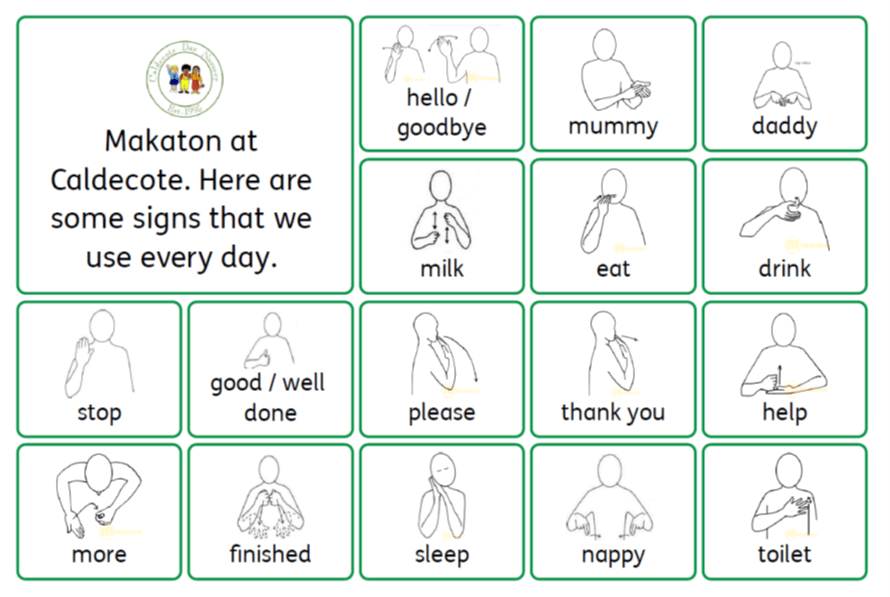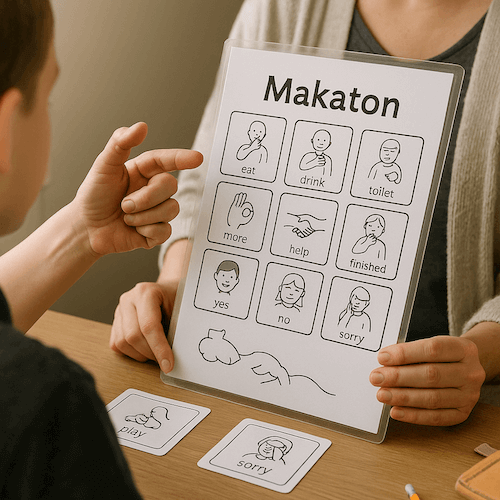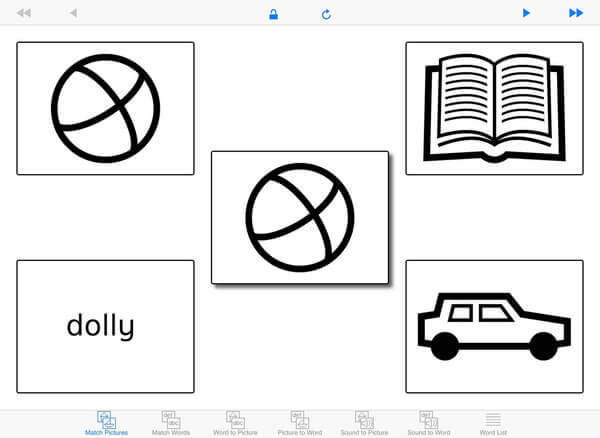Makaton
How can Makton be used to enable more effective classroom communication and provide better access to the curriculum?


How can Makton be used to enable more effective classroom communication and provide better access to the curriculum?
Makaton is a powerful method of communication that combines signs, symbols, and speech to help people with communication difficulties express themselves more clearly. Originally developed by Tony Cornforth and others, Makaton is now used by a wide range of individuals — including those with autism, learning disabilities, or delayed speech — as well as by educators in mainstream schools aiming to create more inclusive learning environments.
Unlike some signing systems, Makaton uses a combination of speech alongside gestures and visual symbols, helping to develop essential communication skills such as eye contact, turn-taking, and the ability to participate in conversations. These are crucial for building relationships and accessing learning in both social and academic contexts.
More than just a tool for basic requests, Makaton plays an important role in building literacy skills and understanding language. It can also be used as an additional language for children who are still developing spoken communication. This makes it highly adaptable for educational settings where inclusivity and accessibility are key.
In this article, we’ll explore how Makaton works, who benefits most, and how it can be integrated into classroom routines to support children in developing meaningful, functional communication — and a stronger sense of belonging.
Visual language refers to a system of communication that uses images, signs, symbols, and gestures to convey meaning — particularly for those who experience language difficulties. It plays a crucial role in communication development, especially for children with learning or speech challenges, including those with a developmental disability.
Unlike verbal communication, visual language relies on the ability to interpret what is seen — colours, shapes, and spatial arrangements — making it a valuable alternative communication method in both home and classroom environments. A good example is a map, which uses forms, lines, and text to communicate meaning visually. Similarly, tools like the Makaton Language Programme use signs and symbols to support understanding and expression in a structured, accessible way.
While formal sign language systems like BSL serve as full languages in their own right, visual language in the context of Makaton offers a simplified and supportive bridge for learners who are developing early communication or who find traditional spoken language inaccessible. For many, this approach unlocks not just language, but confidence, connection, and participation in learning.
Makaton is a communication system based on the use of signs and symbols. The Makaton program assists children in improving and developing their communication skills.
The signs used in British Sign Language and the language of the Deaf community formed the foundation for the Makaton programs' symbols.
Communication is a necessary tool in our daily lives. It is essential for everyone to communicate in order to meet their needs. Education is one situation where communication skills are required.
A child has to learn to communicate to be able to ask for food, ask to use the restroom, make friends, solve problems, and participate in class. Yet, some people find it challenging to communicate; as a result, sign language can assist with several communication issues.
Makaton can be customised according to the person's needs and used at a level that is appropriate for the person's abilities. After a child can express themselves orally, many people gradually stop using signs or symbols.
The following sections will go over how the Makaton language program works.

We frequently communicate with gestures without even realising it. Our brains recognize everyday movements quickly and use them to develop our thoughts and ideas.
Makaton signs are based on a variety of hand gestures, which is the main distinction between Makaton and other communication systems. It makes it simpler for people to use this tool for regular communication.
Unlike British Sign Language, which has its own sentence structure and grammar standards, Makaton gestures are easier to use and follow while speaking in regular English sentences.

Makaton is useful for language learning because the signs you learn directly translate into spoken English. For example, pointing the hand towards the mouth while saying "food," "hungry," or "eat" indicates that someone is eating.
Makaton has a core vocabulary of approximately 450 topics and a resource vocabulary of over 11,000 items. As technology develops, these figures will continue to rise. The Makaton method also includes detailed line drawings to help us understand the terms in our vocabulary.
Makaton symbols help students understand how objects, feelings, and actions appear in the real world. Some Makaton users may carry a book or sheet of symbols to help provide background for what they are saying to people. For example, if they want to ask for "food," they may point to a picture of a plate, knife, and fork.

Here is an example of the use of greeting signs in Makaton and how they relate to real-world expressions:
https://www.youtube.com/watch?v=kcEj_MMHabo
Here is another example demonstrating how to create the Makaton sign by drawing:
https://www.youtube.com/watch?v=RX2BEnODb70

Makaton is not intended to replace or slow down someone's learning of spoken English. Instead, Makaton gives everyone the tools to participate in the dialogue and offers some valuable stepping stones in the language learning process.

One of the most popular language programs in the UK for people with learning or communication challenges is Makaton. Parents, siblings, friends, instructors, and medical teams who treat individuals who have communication issues can use Makaton.
Every child has the right to learn and the right to take part in society. A child who struggles with learning should not be asked to do tasks that are beyond their ability. The main goal should be to give the child the tools to engage with others and participate in the community. It is a basic human right to give children a supportive environment to help them deal with their challenges.

1. Grove, N., & Walker, M. (1990). The Makaton Vocabulary: Using manual signs and graphic symbols to develop interpersonal communication. Augmentative and Alternative Communication, 6, 15–28.
Summary:
This foundational study explains how Makaton helps children with communication difficulties by combining manual signs and symbols with speech to support basic communication and interpersonal language skills, making communication accessible for people with various disabilities in school environments.
2. Deliyannis, I., & Simpsiri, C. (2008). Interactive multimedia learning for children with communication difficulties using the Makaton method.
Summary:
This study developed a multimedia learning system that used Makaton to improve communication skill development in children with communication needs, showing promise for creating flexible and communication-accessible learning experiences within classroom environments.
3. Mistry, M., & Barnes, D. (2013). The use of Makaton for supporting talk, through play, for pupils who have English as an Additional Language (EAL) in the Foundation Stage. Education 3-13, 41(6), 603–616.
Summary:
This research highlights Makaton’s effectiveness in supporting basic communication and spoken language acquisition among children with communication needs and EAL, demonstrating its ability to make communication accessible in diverse early years settings.
Makaton is a powerful method of communication that combines signs, symbols, and speech to help people with communication difficulties express themselves more clearly. Originally developed by Tony Cornforth and others, Makaton is now used by a wide range of individuals — including those with autism, learning disabilities, or delayed speech — as well as by educators in mainstream schools aiming to create more inclusive learning environments.
Unlike some signing systems, Makaton uses a combination of speech alongside gestures and visual symbols, helping to develop essential communication skills such as eye contact, turn-taking, and the ability to participate in conversations. These are crucial for building relationships and accessing learning in both social and academic contexts.
More than just a tool for basic requests, Makaton plays an important role in building literacy skills and understanding language. It can also be used as an additional language for children who are still developing spoken communication. This makes it highly adaptable for educational settings where inclusivity and accessibility are key.
In this article, we’ll explore how Makaton works, who benefits most, and how it can be integrated into classroom routines to support children in developing meaningful, functional communication — and a stronger sense of belonging.
Visual language refers to a system of communication that uses images, signs, symbols, and gestures to convey meaning — particularly for those who experience language difficulties. It plays a crucial role in communication development, especially for children with learning or speech challenges, including those with a developmental disability.
Unlike verbal communication, visual language relies on the ability to interpret what is seen — colours, shapes, and spatial arrangements — making it a valuable alternative communication method in both home and classroom environments. A good example is a map, which uses forms, lines, and text to communicate meaning visually. Similarly, tools like the Makaton Language Programme use signs and symbols to support understanding and expression in a structured, accessible way.
While formal sign language systems like BSL serve as full languages in their own right, visual language in the context of Makaton offers a simplified and supportive bridge for learners who are developing early communication or who find traditional spoken language inaccessible. For many, this approach unlocks not just language, but confidence, connection, and participation in learning.
Makaton is a communication system based on the use of signs and symbols. The Makaton program assists children in improving and developing their communication skills.
The signs used in British Sign Language and the language of the Deaf community formed the foundation for the Makaton programs' symbols.
Communication is a necessary tool in our daily lives. It is essential for everyone to communicate in order to meet their needs. Education is one situation where communication skills are required.
A child has to learn to communicate to be able to ask for food, ask to use the restroom, make friends, solve problems, and participate in class. Yet, some people find it challenging to communicate; as a result, sign language can assist with several communication issues.
Makaton can be customised according to the person's needs and used at a level that is appropriate for the person's abilities. After a child can express themselves orally, many people gradually stop using signs or symbols.
The following sections will go over how the Makaton language program works.

We frequently communicate with gestures without even realising it. Our brains recognize everyday movements quickly and use them to develop our thoughts and ideas.
Makaton signs are based on a variety of hand gestures, which is the main distinction between Makaton and other communication systems. It makes it simpler for people to use this tool for regular communication.
Unlike British Sign Language, which has its own sentence structure and grammar standards, Makaton gestures are easier to use and follow while speaking in regular English sentences.

Makaton is useful for language learning because the signs you learn directly translate into spoken English. For example, pointing the hand towards the mouth while saying "food," "hungry," or "eat" indicates that someone is eating.
Makaton has a core vocabulary of approximately 450 topics and a resource vocabulary of over 11,000 items. As technology develops, these figures will continue to rise. The Makaton method also includes detailed line drawings to help us understand the terms in our vocabulary.
Makaton symbols help students understand how objects, feelings, and actions appear in the real world. Some Makaton users may carry a book or sheet of symbols to help provide background for what they are saying to people. For example, if they want to ask for "food," they may point to a picture of a plate, knife, and fork.

Here is an example of the use of greeting signs in Makaton and how they relate to real-world expressions:
https://www.youtube.com/watch?v=kcEj_MMHabo
Here is another example demonstrating how to create the Makaton sign by drawing:
https://www.youtube.com/watch?v=RX2BEnODb70

Makaton is not intended to replace or slow down someone's learning of spoken English. Instead, Makaton gives everyone the tools to participate in the dialogue and offers some valuable stepping stones in the language learning process.

One of the most popular language programs in the UK for people with learning or communication challenges is Makaton. Parents, siblings, friends, instructors, and medical teams who treat individuals who have communication issues can use Makaton.
Every child has the right to learn and the right to take part in society. A child who struggles with learning should not be asked to do tasks that are beyond their ability. The main goal should be to give the child the tools to engage with others and participate in the community. It is a basic human right to give children a supportive environment to help them deal with their challenges.

1. Grove, N., & Walker, M. (1990). The Makaton Vocabulary: Using manual signs and graphic symbols to develop interpersonal communication. Augmentative and Alternative Communication, 6, 15–28.
Summary:
This foundational study explains how Makaton helps children with communication difficulties by combining manual signs and symbols with speech to support basic communication and interpersonal language skills, making communication accessible for people with various disabilities in school environments.
2. Deliyannis, I., & Simpsiri, C. (2008). Interactive multimedia learning for children with communication difficulties using the Makaton method.
Summary:
This study developed a multimedia learning system that used Makaton to improve communication skill development in children with communication needs, showing promise for creating flexible and communication-accessible learning experiences within classroom environments.
3. Mistry, M., & Barnes, D. (2013). The use of Makaton for supporting talk, through play, for pupils who have English as an Additional Language (EAL) in the Foundation Stage. Education 3-13, 41(6), 603–616.
Summary:
This research highlights Makaton’s effectiveness in supporting basic communication and spoken language acquisition among children with communication needs and EAL, demonstrating its ability to make communication accessible in diverse early years settings.